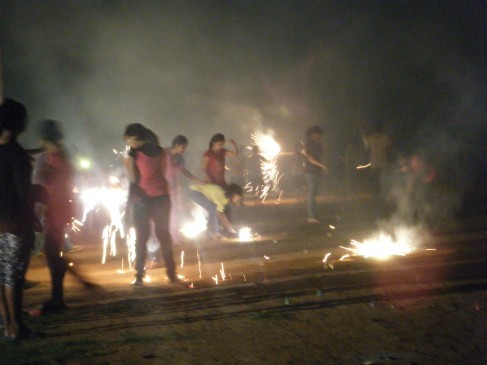
Fayad who drove us on a desert safari, was the closest to a Dubai native that we met in our four-day Dubai stay. It’s rare finding a true blue local in the city, where 80 percent population is of foreigners, representing nearly 200 nationalities.
The locals, most of whom can relate, if remotely, to the 18 native sheikhs, – entire chunk of land in Dubai , they say, was once owned by four sheikhs – are not usually spotted on Dubai streets. An affluent lot, many of Dubai Emirate residents are property owners; most others work in the govt. which pays employees very well.
Besides, the locals here are entitled to spacious houses – 5 to 7 bedroom with private swim pool – and they are provided with free water and power supply. Not sure if Fayad, who has spent his life in Dubai, can be considered true blue Dubai native,. considering that his mother hails from Abu Dhabi, and his father, from Sharjah.

Fayad was an odd one, an Emirate driver who doubled up as our tour guide , All other drivers we ran into in our stay were Asians – Bangladeshi, Pakistani. A room-service waiter in our hotel was Indian. Desis are visible in most places. And most of them slog it out in Dubai, so that they can take home a hefty bank balance, after a 2 or 3 year stay in Dubai.
There are some rich ‘desi’s, such as the Gujarati who employed this Cuddalore guy we ran into, near the Gold Souk, while on a conducted city tour. We had covered the entire stretch of the gold street in minutes – we weren’t shopping there – and were waiting for the others, on a street-side bench,when we met this shop assistant from Cuddalore. Started chatting, for he seemed quite excited to have met a Southey from India .
Shop assistant Vasu (photo) has been in Dubai for 20 years; was working for this shop owner – a Gujarati from Kenya – who owns seven other shops in the city,
Speaking of affluent Asians we heard about a Shetty (B R) who is said to have revolutionized medicare sector in UAE. He had come to Abu Dhabi as medical rep. (or was he a pharmacist ?) in early 1980s. Before long Mr B R Shetty set up a medical centre, in partnership with a local sheikh – Abdulla Humaid Al Mazroei – Together, they developed NMC (New Medical Centre) into a healthcare conglomerate, providing livelihood to 15,000 families. NMC is a chain of 9 hospitals, family clinics, super specialty hospitals, and retail pharmacies spread across UAE. In Dubai, they encourage foreigners to set up any enterprise, provided it is done in partnership with a local Emirait who holds 51 percent share.
Most Indians, and also those from neighbouring Pakistan and Bangladeshi, drive taxi, work in hotels and shops. They are in Dubai to make money, staying for a few years before returning home to settle with a minor fortune.
As visitors, shopping is a prime factor in Dubai – a city of malls and hotels. . Gold and spices are retailed in markets of their own. Shop Assistant Vasu said in the Gold Souk purity – 18, 22 and 24 carat – of gold was guaranteed under law; adulteration of gold was a punishable offence. This cannot be said about spices, said Vasu, adding that much of the items sold in Spice Souk came from Iran; he reckoned that better quality spices would be available back home in India.
To give visitors a feel of what Dubai landscape was like five decades ago, tourism people take you on a drive into the desert, 50 km. away from the city. A sheikh owning a vast desert stretch has turned it into a tourist attraction. At the end of the drive is a small enclave in the desert where you wash up, have dinner, and watch a dance number by a lady in yellow robe. Nothing particularly noteworthy about her performance. A guide had me believe that the resort had initially engaged a belly dancer doing the number.

This is the gateway to Al Maha desert resort, with a 6-star hotel, some 4 km farther into the desert from this point. Guests who don’t fancy a drive make it there by helicopter. Designed to reflect a Bedouin encampment, the desert resort, they say, represents an oasis of luxury. Each suite in the hotel there has private swimming pool. Al Maha – a 6-star resort – is managed by the Emirates Airlines.

Mid-way during the drive to the desert encampment, where they lay out dinner and dance, visitors stop by for a drink of water and the falcon show. You are treated to a lecture-demo on falcon – whether you like it or not . The European bird trainer tells you about the bird, its prey, its speed, eating habit etc. I was far back in the crowd and because of strong wind what he spoke went unheard in our row, And none of seemed to care.
Snag about a conducted tour is that you can’t skip the desert dance or the falcon show, as you find yourself held captive while the tour organiser completes a set routine before the tourists are bused back to the hotel.
Dubai sights on Facebook
Filed under: Uncategorized | Tagged: Desert Safari, Dubai | Leave a comment »


























